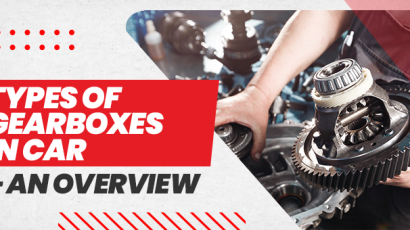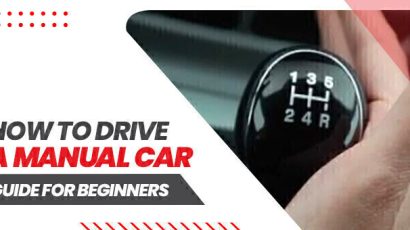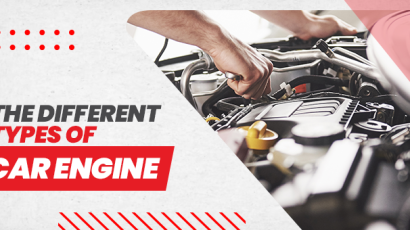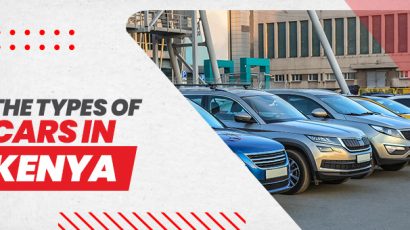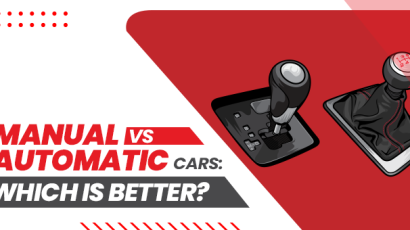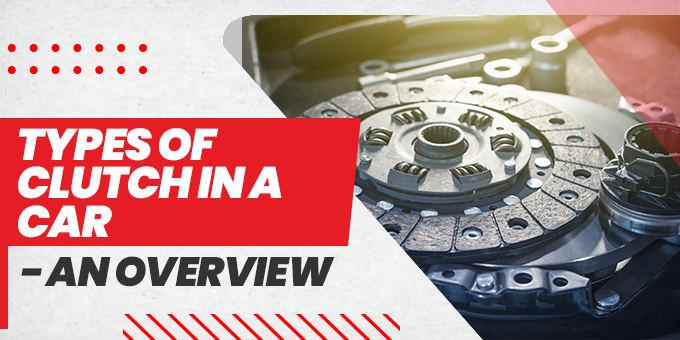
A vehicle has various intricate components that enable it to function well. One of its vital components is the clutch system. A clutch is a mechanical part in the vehicle that shifts power from one rotating shaft to another.
Its main function is to allow the engine to operate at a stationary position. Let’s look at the functions, parts, types, and common clutch problems to understand better understand how your vehicle functions.
How Does a Clutch Work?
How a clutch works is interesting and easy to understand. It starts working only when the friction plates come in contact with each other to transmit power. There are two different plates in a clutch.
You can find one plate mounted to the flywheel while the other moves the crankshaft. The more axial load you apply, the more power will transmit and vice versa. If you press the clutch pedal completely, the moveable disc disengages from the flywheel, thus discontinuing the power. This will enable the engine to run without moving.
On the other hand, if you release the clutch completely, the moveable friction disc will move forward to the flywheel to engage it. How much you press the clutch will determine the working pressure and the power it transmits.
Functions of Clutch
The clutch serves various functions in the car’s functioning. It helps the engine run at a stationary position and makes it easier to change gears. It also reduces the engine speed and keeps the vehicle in smooth control.
Parts of a Clutch
A clutch system comprises various parts. These are mentioned below:
Friction Disc
Depending on the application, these could be single or multiple discs. The friction disc is found mounted on a drive shaft and has a high coefficient of friction.
Flywheel
A flywheel works as long as the engine is working. It is situated on the crankshaft. On its outer side, you can find the friction disc.
Pressure Plate
The pressure plate is placed on the splined hub and features another friction disc on it.
Spring and Release Levers
The spring and levers help function the spring into a back-and-forth motion.
Types of Clutch in a Car
Below are the various types of the clutch in a car you should know about:
Dry and Wet Clutch
Wet clutches are complex and are mostly used in high-torque machines. They use oil to keep them cool and lubricate the internal components. The use of oil is necessary due to the heat generated by these powerful machines.
On the other hand, dry clutches work without the need for oil or any other lubricant. These are mostly single-plated clutches. However, it means that there can be a lack of friction leading to the clutch slipping and negatively affecting the engine’s performance.
Friction Clutch
One of the most basic and commonly used clutches is the friction clutch. It is operated by a cable or hydraulics and comprises a release bearing, clutch plate, and pressure plate. The bearing engages or disengages the transmission and flywheel. Most cars use a single plate clutch to engage the transmission. Some powerful cars may use multiple clutches.
Dual Clutch Mechanism
Most premium cars come fitted with a dual-clutch transmission mechanism. It uses a small clutch for an even number of gears and a large clutch for the odd gears. The dual-clutch mechanism uses a DCT, which makes the mechanism more suited for various car types, such as sports, hot hatchers, and supercars. The gear shifts on the dual-clutch are seamless, as only one clutch is engaged while the other is idle until it receives input.
Multiplate Clutch
In a multi-plate clutch, multiple plates of friction are stacked together, creating friction on a larger scale. This leads to a larger torque output without any damage. These types of clutches are best suited to high-performance motorsport vehicles such as the WRC and Formula series.
Cone Clutch
Cone clutches use conical surfaces having a different contact area than the normal frictional surface. Essentially, these are nothing but frictional-type clutches that provide a tapered shape.
Electromagnetic and Electrohydraulic Clutches
Electromagnetic clutches use proximity sensors to engage the clutch by pushing a button. These are mostly used when there is no regard for the life and health of the mechanical components of shifting.
The clutch is activated remotely through a DC current passing through an electromagnet and creating a magnetic field. Most auto motives with a paddle shifter mechanism use this clutch system.
Overrunning Clutch
An overrunning clutch is also called a freewheel clutch. It separates the drive shaft from the driven shaft as the driven shaft rolls over the other shaft.
Hydraulic Clutch
The hydraulic clutch is a kind of clutch with a hydrodynamic coupling, and the shafts do not touch each other.
Common Problems Associated With Clutches
If you conduct regular car maintenance, chances are your clutch will last you a long time. Generally, a clutch can easily be used for up to 8,000 miles without any worry. Common problems affecting a clutch’s performance include misalignment, wearing, broken cable, leaks, hard clutch, and air entering the hydraulic line.
Tips for Clutch Maintenance
Following are some tips that can help you prolong the life of your clutch and make driving safe. Let’s have a look:
Develop Good Driving Habits
Mechanical maintenance is just one aspect of maintaining the life of the clutch. It is often our driving habits that cause the damage. For instance, driving while keeping your foot on the clutch can lead to quicker wear and tear of the clutch system and its associated parts.
When you are not using the clutch pedal, you should rest your foot on the ground. Another thing to avoid is violent gear shifting that causes internal damage to the transmission. Making these shifts to your driving habits can help you maintain the clutch for longer.
Bleed the Clutch Fluid
The efficiency of hydraulic pressure can greatly decrease if air bubbles form in the fluid lines. You can manually bleed the clutch or use an automatic bleed system to fix the problem. Alternatively, taking your vehicle to a professional mechanic can help bleed the hydraulic clutch fluid lines properly.
Reduce Friction and Heat
Constantly having your foot on the clutch produces excess friction and heat, which are detrimental to the proper functioning of the clutch. Another thing to avoid is “slipping” the clutch when hauling or towing a heavy load. It may let you drive faster, but greater heat will damage the major clutch components. For momentum, try to use the lower gears as much as possible and avoid slipping the clutch.
Conclusion
A clutch is a sensitive component of the vehicle that allows you to shift gears. Its maintenance is vital to drive your car smoothly. You must ensure that you avoid possible problems by conducting a routine check and taking your vehicle to a mechanic in case of a problem.
SBT Japan stocks an extensive inventory of high-quality used cars. If you are confused about your next purchase, let us guide you to the best car. We have 24/7 live support to help you navigate your choices.






